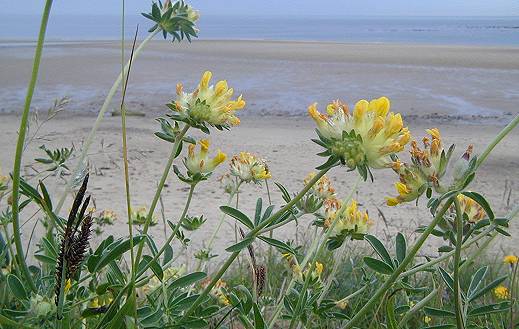
Back to the Index page
This was a trip to the coast to see some plants that do not occur inland (or at least not commonly). Unfortunately the conditions were grey and cloudy, with occasional showers – not really seaside weather!
Having checked the tide tables we decided to start at Cayton Bay, taking in the shore plants and an interesting marsh just above the tide-line. The cliffs here are unstable, composed of boulder clay which is neutral-limy for the most part. They support masses of kidney vetch Anthyllis vulneraria, especially on areas of newly exposed earth.

On the way down to the shore there were several patches of sea plantain (Plantago maritima) in full flower – with its yellow anthers and rather delicate flower spikes a much more attractive plant than the common garden weeds rat-tail and ribwort plantains.
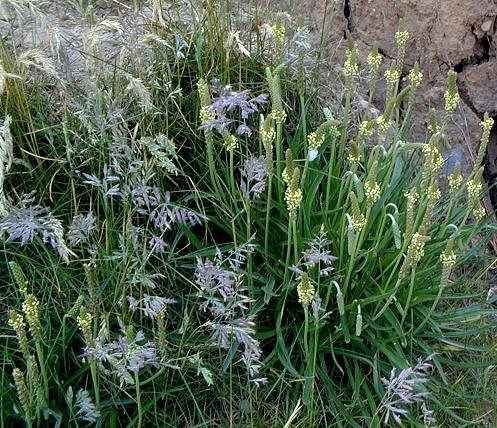 |
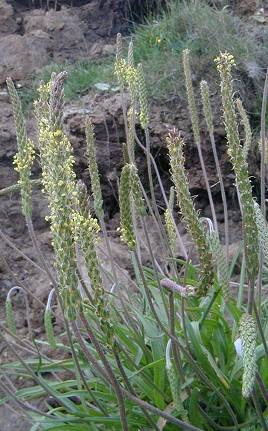 |
We then investigated the marshy area on the lower slopes of the cliff. In particular we wanted to see the hemlock water dropwort (Oenanthe crocata) which is, as its name suggests, highly poisonous; rather a pity as it is one of the more attractive of the umbellifers, with characteristic wedge-shaped leaflets and a mass of white flowers.
 Hemlock water dropwort in the marsh, and in detail. (The leafy plant to the left is a willowherb.) |
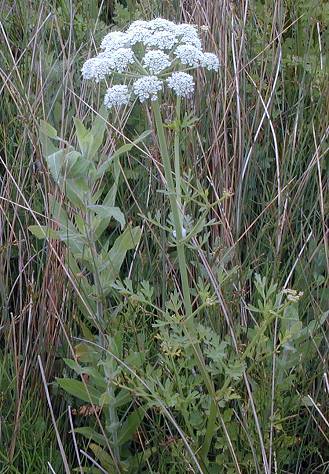 |
The marsh also has many other typical wetland species including flag iris (Iris pseudacorus) and plenty of ragged robin (Lychnis flos-cuculi), which was a darker pink than the picture suggests – I find it very hard to capture rich pinks on “film”.
 |
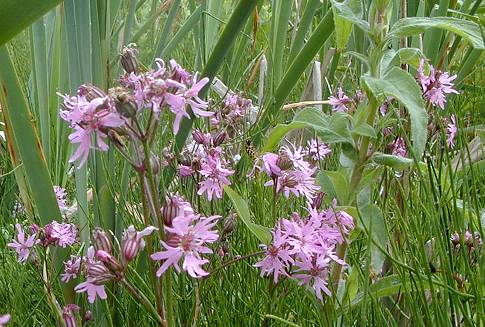 |
We finally made it down onto the beach, where I was intrigued by these ripples formed by the wind in the dry sand. The ridges were of slightly coarser-grained white sand than the troughs of fine, purplish grains. The purple sand lay on the surface as a very thin layer, and any disturbance such as footprints revealed the white sand underneath. The low-growing green plant is sea sandwort (Honckenya peploides), a typical maritime plant hugging the ground and with fleshy leaves. Its flowers are tiny, only a quarter of an inch or so (c8mm).

The other plant we were delighted to find was sea rocket (Cakile maritima), a pretty annual with lilac flowers and pinnately-lobed leaves (also fleshy).
 Sea rocket above and sea sandwort to the right. The sandwort picture is enlarged, and in fact its flower is only about half the size of the more attractive rocket’s. |
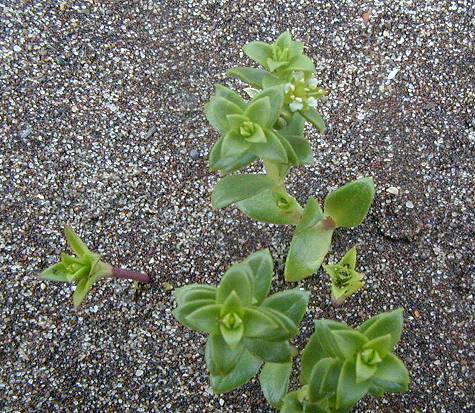 |
We then moved on to Scarborough Castle, to investigate the interesting grassland below the ramparts. The castle is built on a superb defensive site, a rocky headland with views over the sea to both north and south. The rock is limestone, and supports a wide variety of species.
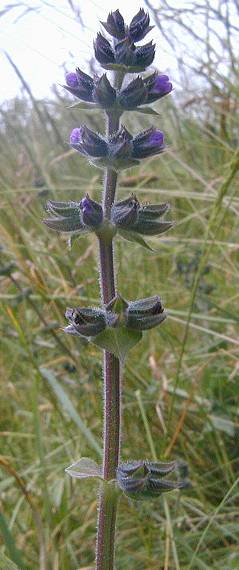 |
One of the more unusual plants is wild clary (Salvia verbenaca). a relative of sage, which grows on limestone grassland in the south of England but is rare in Yorkshire. The warm south-facing slopes here suit it well and we found several plants (it was hard to photograph because of the steep slope). I was also pleased to find wild carrot (Daucus carota), an attractive plant with its feathery leaves and umbels of pale pink flowers with the characteristic long bracts under the flowerhead. It was not quite out, so the darker central flower is not apparent.
|
Another interesting plant is sea beet (Beta vulgaris ssp. maritima), which is thought to be the wild stock from which cultivated beet crops was bred. It is a rather dock-like plant with green flowers and shiny leathery leaves which often develops red stems as seen here.
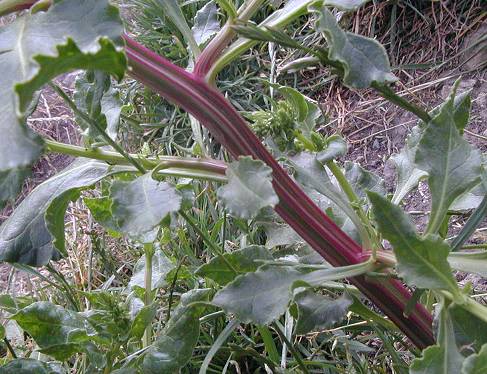
More colourful species included common mallow (Malva sylvestris) and marjoram (Origanum vulgare).

|
|
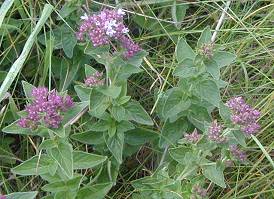 Marjoram loves sunny limestone banks. Its flowers are reminiscent of thyme close to, and the whole plant has a lovely herby scent. |
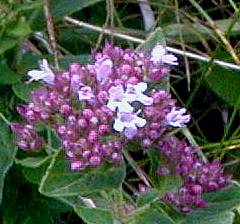 |
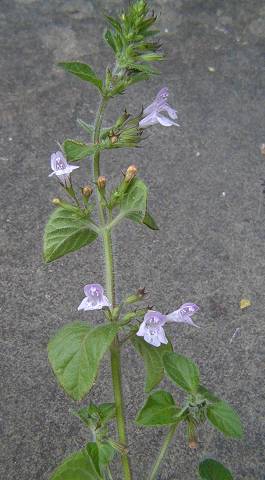 There is also spotted medick growing along the edge of the path, but I did not manage to get a picture. It was hardly in flower, and many of the leaves were rather tatty – something had been eating it.
There is also spotted medick growing along the edge of the path, but I did not manage to get a picture. It was hardly in flower, and many of the leaves were rather tatty – something had been eating it.
I was however luckier with the Calamint (Clinopodium ascendens). This is another plant that loves warm grassy slopes on limestone mostly in the south, although there are scattered records of it as far north as Co. Durham. It is not common anywhere and seems to be decreasing. The plants we saw were mostly still in bud, and at this stage they are very like corn mint, although the scent is not the same – recognisably minty but subtly different. Once in bloom however there is no mistaking it: the flowers in stalked groups in the leaf axils rather than in whorls all round the stem, and a delicate lilac-pink with darker markings (see detail below).

There were very few birds in evidence, and I did not see any butterflies (probably because of the poor weather). However, there were several of these caterpillars and moths (Burnet moths Zygaena lonicerae).
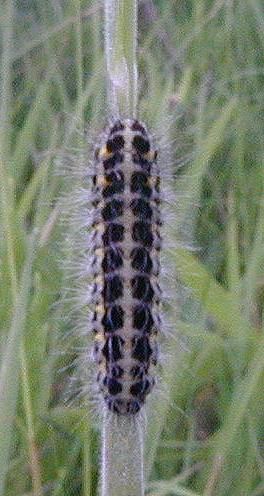 |
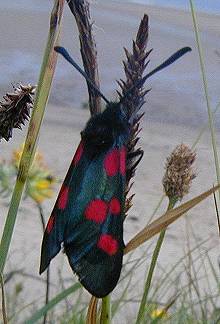 Colourful moth and hairy caterpillar (about an inch long) which are both narrow-bordered 5-spot Burnet moth Zygaena lonicerae (thanks to Carl and Stuart for the id). There were also papery pupae on some of the grass stems which I now think were the intermediate stage. |
| Gill Smith | Back to the Index page |
Text and photos © Gill Smith 2006